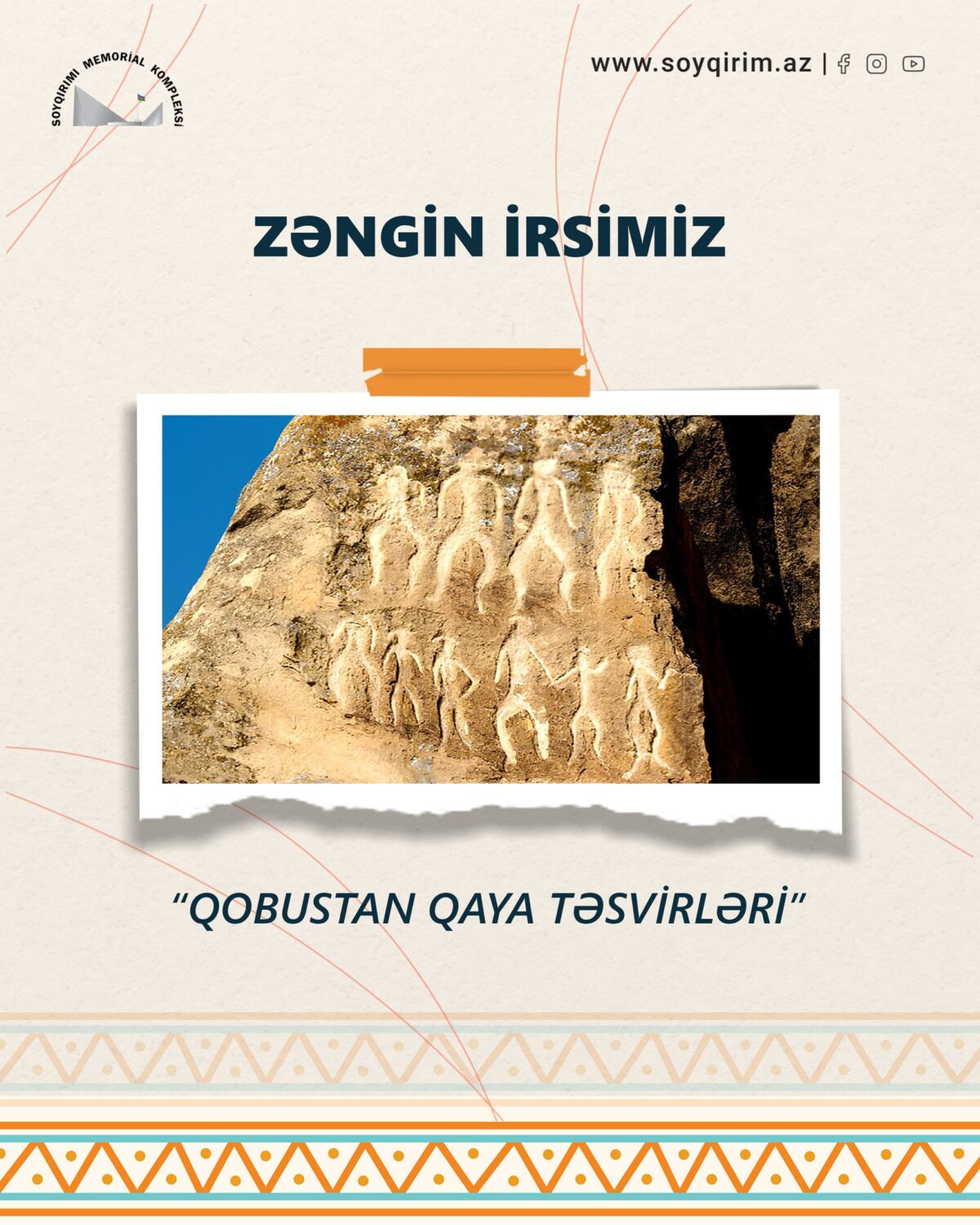Gobustan Rock Art

The Gobustan area is located approximately 60 kilometers from the city of Baku. In the Büyükdağ, Kiçikdağ, and Cingirdag massifs here, rock engravings that have been preserved for millennia have been discovered. The Gobustan rock art is one of the brightest examples of the rich historical and cultural heritage of the Azerbaijani people.
The Gobustan rock engravings date back to various periods, ranging from the 5th to the 8th millennium BCE to the Middle Ages. Since 1939, under the leadership of scientist Ishaq Jafarzadeh, along with C. Rustamov, F. Muradova, and other archaeologists, the first archaeological studies of the Gobustan petroglyphs began. As a result of the archaeological excavations conducted since that time, over 7,000 rock engravings, as well as ancient settlements, caves, up to 40 mounds, artifacts from the Mesolithic period, and more than 100,000 items of material culture, have been discovered.
The Gobustan rock art, which attracts significant interest, is a unique monument reflecting the lifestyle, worldview, and cultural development of humanity thousands of years ago. These engravings, mainly depicting hunting scenes, various animal figures, humans, dance scenes, religious rituals, and ship representations, reveal that the ancient inhabitants of Gobustan engaged in hunting, animal husbandry, and fishing, while also engraving their customs and traditions on stones. The depiction of dancing men and women shows that they celebrated together during festivals and ceremonies. The ship engravings prove that ancient people used the Caspian Sea for travel and fishing. Some of the engravings even depict cosmic symbols such as the sun and the moon. Additionally, an ancient Latin inscription from the late 1st century CE was found on a stone here, which indicates that Gobustan was located along the routes of various civilizations.
As a result, the Gobustan rock engravings are a rare example of our people’s ancient historical memory, cultural heritage, and artistic thought. These monuments are an invaluable treasure for us to better understand our past and pass it on to future generations, serving as a living museum that proves to the world how ancient and rich Azerbaijan’s roots are.
In 2007, the Gobustan rock art was included in UNESCO’s World Heritage List, which marks the international recognition of Azerbaijan’s ancient history. Currently, the Gobustan State Historical and Artistic Reserve attracts not only Azerbaijani citizens but also tourists from various countries around the world.






